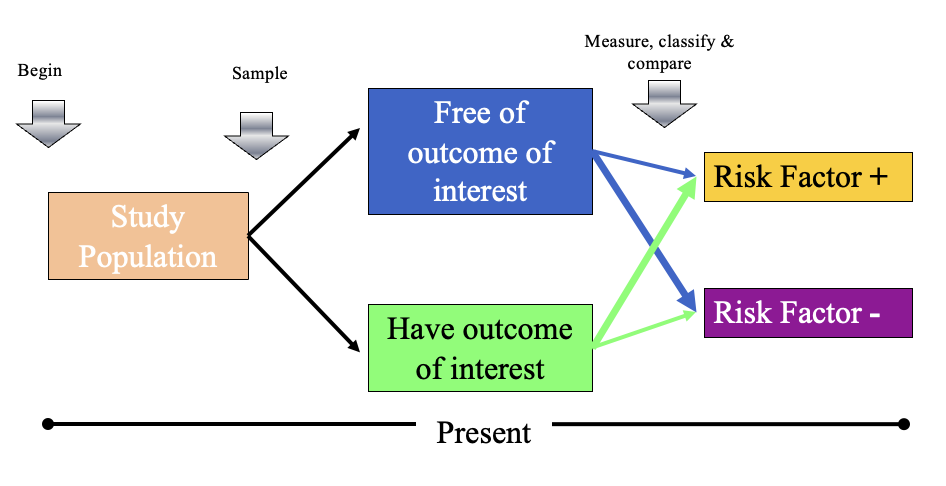Week 6 - Cross-sectional Studies
1/8
There's no tags or description
Looks like no tags are added yet.
Name | Mastery | Learn | Test | Matching | Spaced |
|---|
No study sessions yet.
9 Terms
cross-sectional studies are ____
no forward/backward = exposure and outcome happen at the same time

2 types of cross-sectional studies
descriptive
suggest an outcome prevalence
point prevalence = single point in time
period prevalence = period of time
analytical
compare prevalence of outcome between exposed vs. unexposed
characteristics of cross-sectional studies
observational
conducted at a single point-in-time or at successive periods of time
simultaneous
selection
assignment
assessment of subjects
when to use cross-sectional studies
evaluate a new test/new application of an old test
evaluate predictive capabilities
determine prevalence of a prob
narrow a list of possible etiological agents/causes
pros of cross-sectional studies
fast
relatively inexpensive
efficient (time, resources)
can result in prospective study
useful when:
there is an unchanging expo over time
short time between expo & disease
there’s a need for prevalence determination
cons of cross-sectional studies
can’t pinpoint etiological factors
can’t determine nature of relationship
only show associations
data collection errors
no loss to f/u but usually suffer from non-responders
transient effects
antecedent-consequent bias
sequential cross-sectional study
= pseudo-longitudinal study
use combined data to determine trends
assume same popu
probs:
changed reference popu
changed sampling technique
changed responses pattern
components of a cross-sectional study
title, abstract, keywords
include the timeframe
can include the design
abstract should include what this cross-sectional study tries to do
intro
background + objective
methods
if said “the study has been described in detail elsewhere” → need to include reference → have to go back and look at the reference source
popu & sampling technique well defined
have inclusion + exclusion criteria
samples representative + well defined (age, demographics…)
same non-response minimized
participants defined objectively + unbiased
how they collect data (surveys, forms…)
outcomes & expo were objective + unbiased + well-defined
stats - which tests were used
results + conclusions
include flow diagram (participants left…) —> numbers need to match
prevalence + OR calculated
response rate presented
timeline between data collection & publication is short
numeric consistency
discussions
interpretation
strengths + limitations
do the results match with the objective
supplemental
author affilations
lacking peer review dates
statement of conflict
statement of funding
authors note